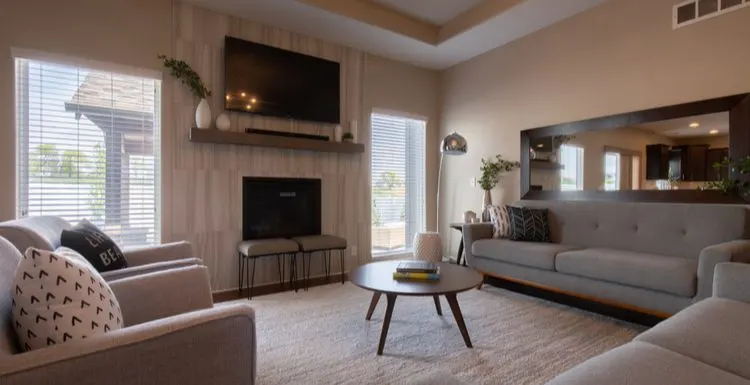Wondering how to decorate a transitional style home?
The transitional décor combines traditional style with modern elements for a uniquely sophisticated look. Read on to learn more and see real-life examples.
What Is a Transitional Style Home?
If you find it challenging to pick just one style for home décor, transitional could be an excellent fit for you. It’s not about change or moving, but about mixing.
Transitional décor combines the best of traditional style with fresh infusions of modern or contemporary pieces.
This style has become increasingly popular and gives you the freedom to incorporate unique elements that appeal to you from both ends of the spectrum.
24 Unique Transitional Style Home Ideas
We love transitional style homes so much that we dug through thousands of images to bring you the best real-life examples we could find.
Use these as inspiration or copy them as is—the sky is the limit when you’re decorating!
A Neutral Color Palette
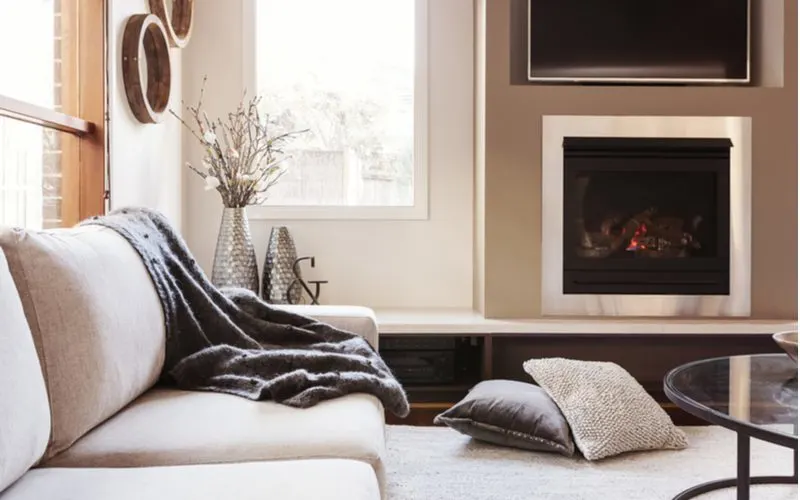
Jodie Johnson/Shutterstock
A signature of the transitional style is the neutral color palette. Keep your overall color scheme to tones of gray, cream, taupe, white, and black. Although accessories may have vibrant patterns or colors, rooms typically have a clean, subdued feel.
You can see the range of earth tones and black in this example. Even with a lot of beige tones, this room feels warm, not bland.
Light Atmosphere
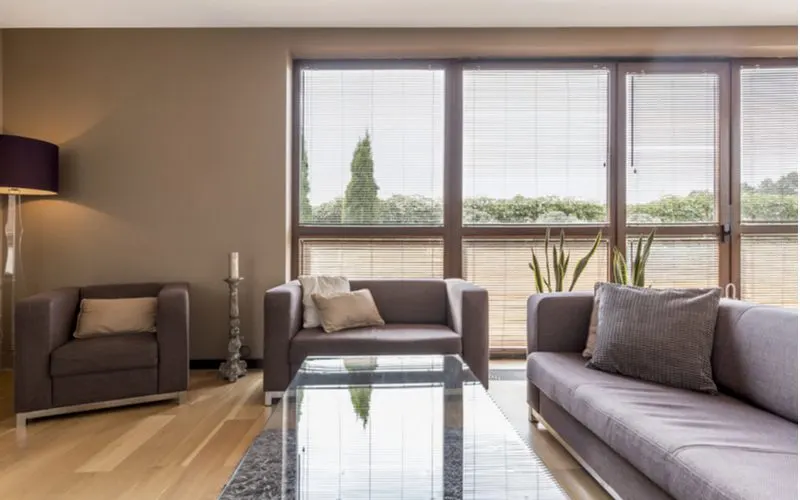
Photographee.eu/Shutterstock
While the transitional style is sleek and muted, it avoids dark and heavy furnishings. Light from windows and natural sources is the best way to brighten up a room in your home.
This example has impressive floor-to-ceiling windows that allow in plenty of natural light. If your home doesn’t have this type of window arrangement, add lamps and artificial light to brighten your space.
Medium Scale Furniture
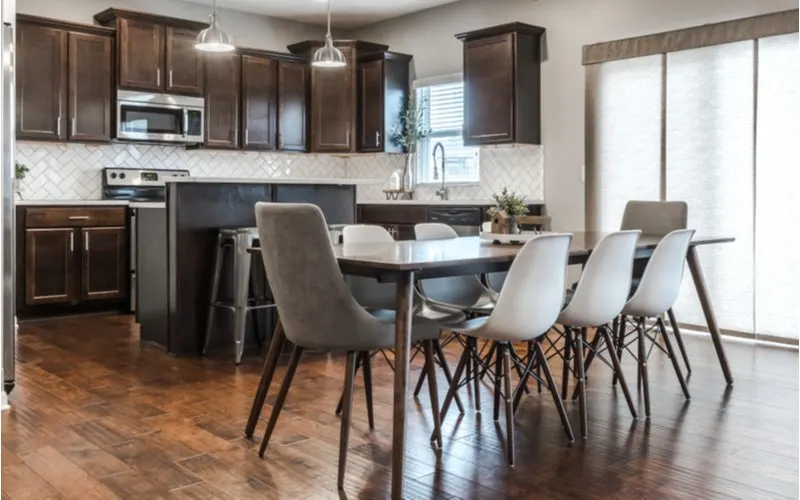
Aspects and Angles/Shutterstock
Choose bold furniture with simple, classic lines. In transitional style, furniture isn’t necessarily the focal point of the room.
So, select moderate-sized neutral pieces that aren’t excessively large or tiny. Comfort is vital, and the style leans toward being less formal and more casual.
You can see this principle reflected in the photo, with a dining setup that doesn’t dominate the room and is a natural spot for dinner and game night.
Traditional Décor Elements
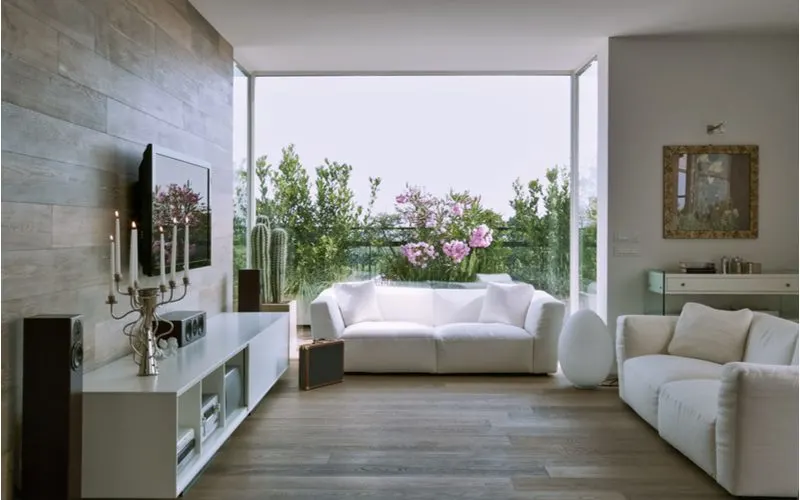
adpePhoto/Shutterstock
A hallmark of the transitional style is mixing modern and traditional décor pieces to suit your personality. Antiques and family heirlooms are welcome alongside trendier items.
Look at the candelabra and old-time suitcase in this gorgeous living room space. Browse your favorite shops and find unique pieces reminiscent of past eras to give your room personality.
Leather
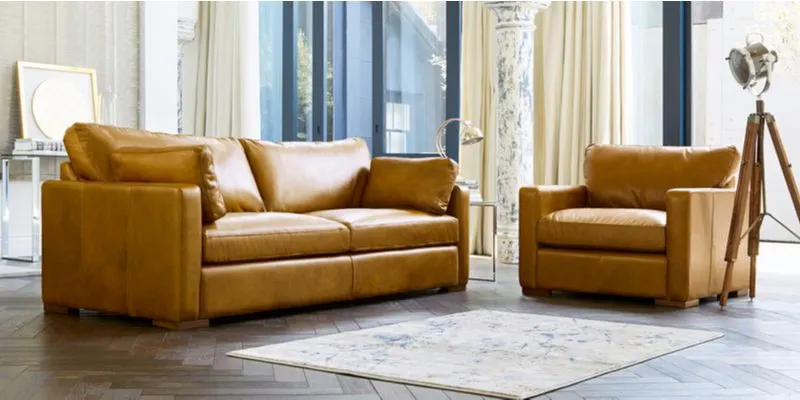
Gaf_Lila/Shutterstock
Leather is a staple in transitional style. Leather looks sleek yet not overly formal. This material also comes in a variety of black, brown, and grey tones to suit your transitional color scheme.
Leather furniture also gives off a comfortable, inviting vibe that makes you want to sink in for an afternoon nap or an intimate conversation with friends.
Glass and Metal Combos
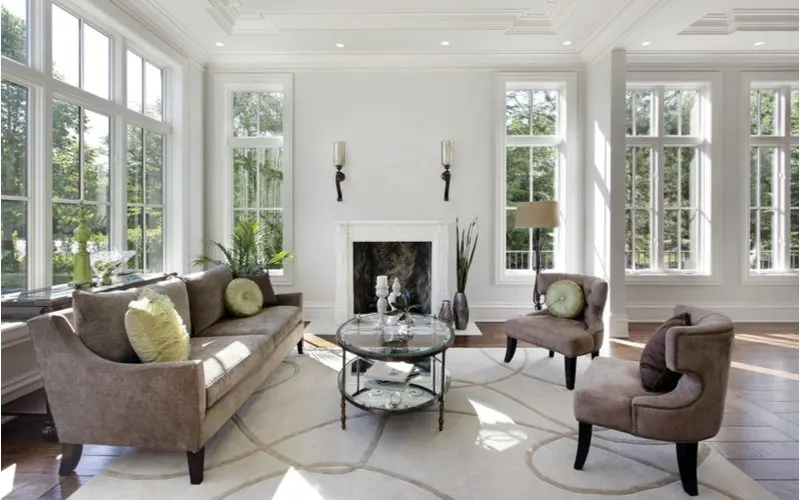
pics721/Shutterstock
Look for glass and metal décor combos. Contemporary design often features décor pieces entirely made of glass, metal, or acrylic, but this is less common in transitional style.
Instead, look for combinations of materials that display contrast. In this photo, you can see a glass and metal coffee table and wall sconces.
Accent Pillows
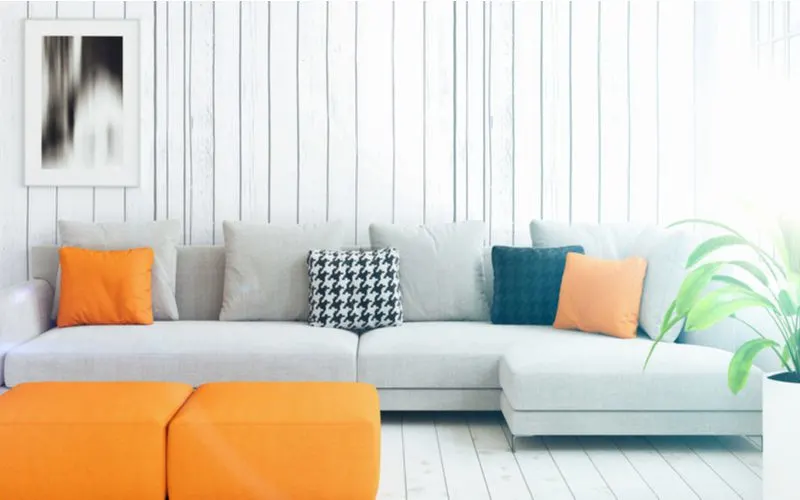
Roman King/Shutterstock
Although we’ve emphasized an overall neutral color palette with this decorating style, color isn’t entirely off-limits.
For example, boldly patterned pillows provide just enough hue to brighten up the room without overwhelming the overall palette.
Textured Fabrics
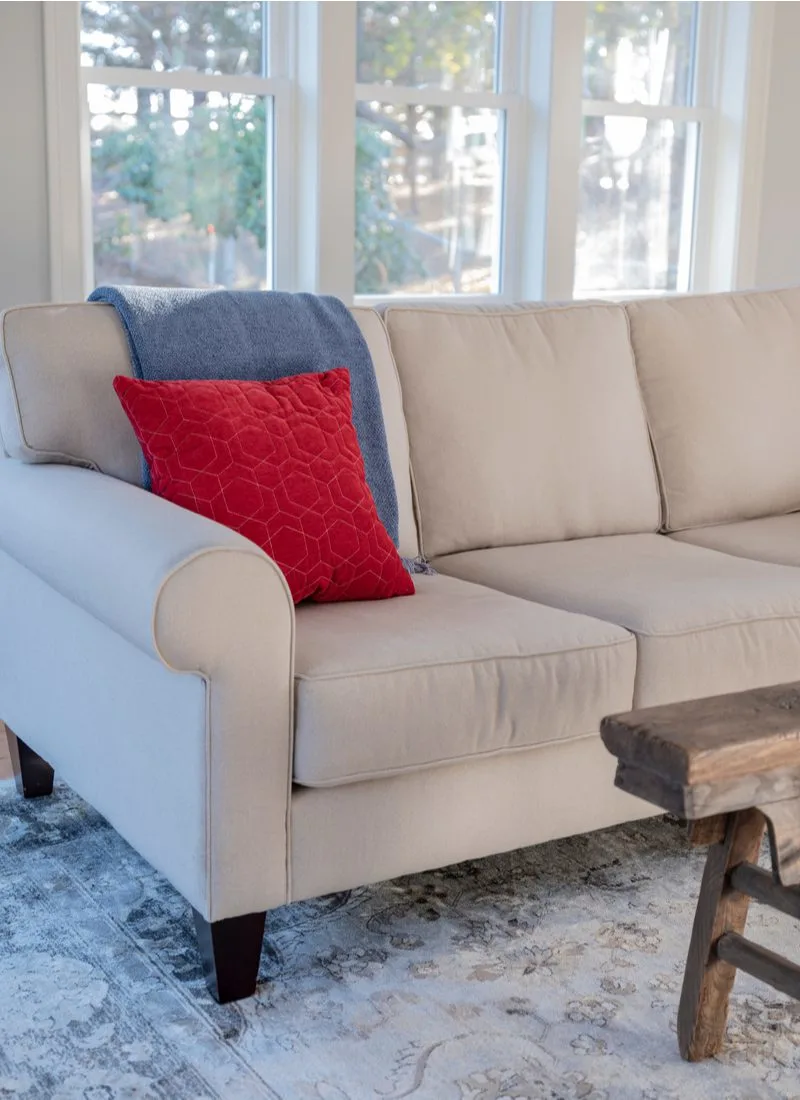
NayaDadara/Shutterstock
Textured fabrics like chenille, suede, and corduroy are standard in transitional homes. These textures provide visual interest, depth, and variety.
A throw blanket on the couch or over an armchair also promotes the air of casual relaxation that’s part of this style.
Pops of Color
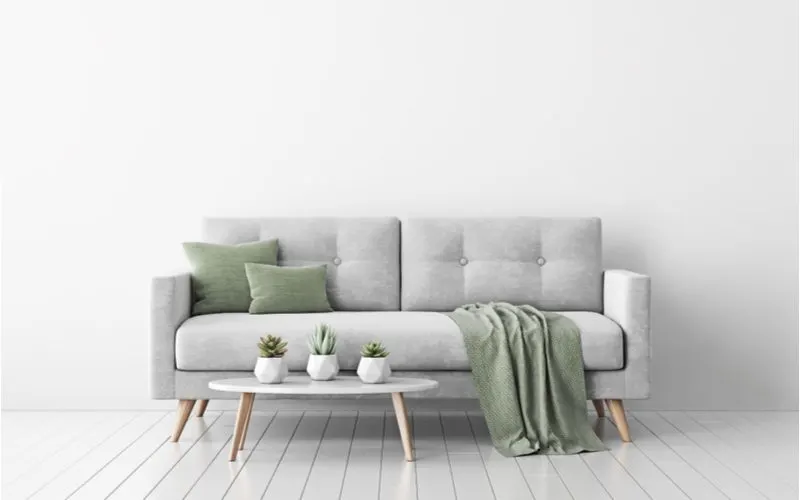
Marina_D/Shutterstock
This sofa would be perfect for a transitional style room. The couch and coffee table are smaller in scale and have beautiful grey and wood tones.
The green décor and accessories add just enough color for variety without disrupting the room’s overall style.
Minimal Accessories
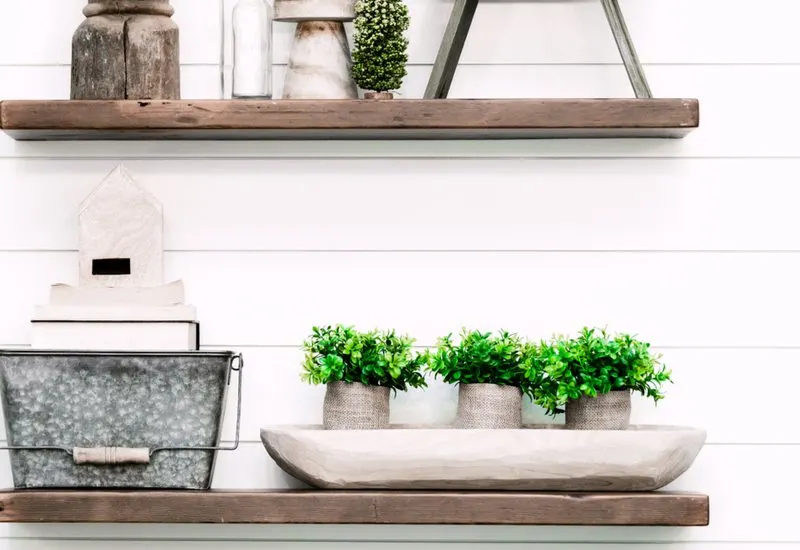
Aspects and Angles/Shutterstock
Stay away from clutter. Accessories in the transitional style should be clean and minimal. Wood tones, stone, and natural colors blend well with the overall aesthetic, and natural materials like plants and wood can lend an organic feel to a room.
Candles, flowers, and artwork are also worth considering.
Soft Lines
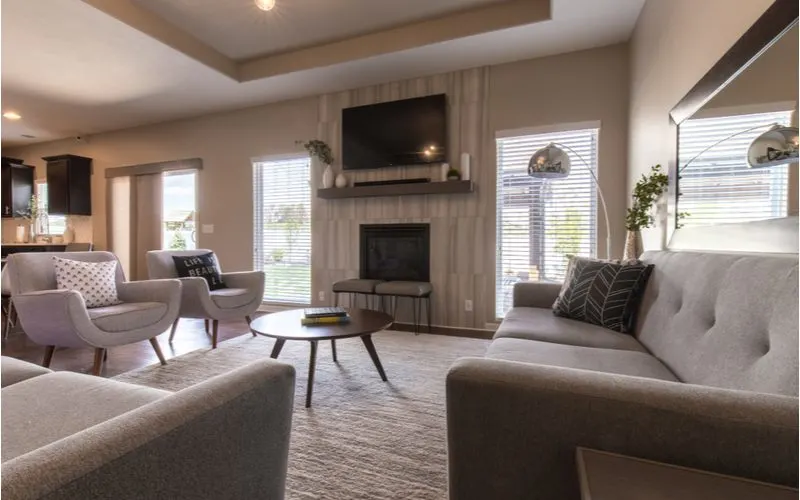
Aspects and Angles/Shutterstock
Transitional style features simple, classic lines in furniture and accessories. Steer away from traditional, heavy furniture or the angular lines of contemporary style.
Ornate work can be a decorative addition in small doses, but it shouldn’t be overdone. Find soft curves in the sofa, chairs, and tables, such as you see in this photo.
Floor Length Drapes
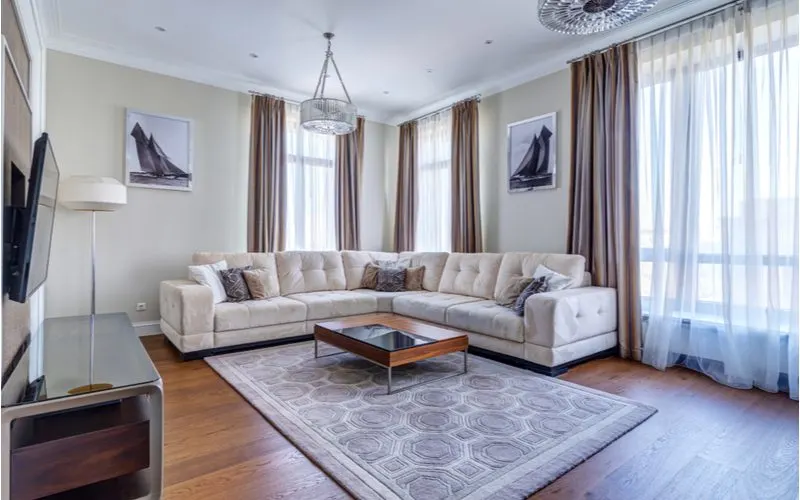
Alessandr Vodovozov/Shutterstock
Floor-length drapes are another feature to enhance your room. Neutral-colored drapes add depth to the room without drawing attention. Drapes are also timeless, spanning multiple eras of decorating.
Mirrors
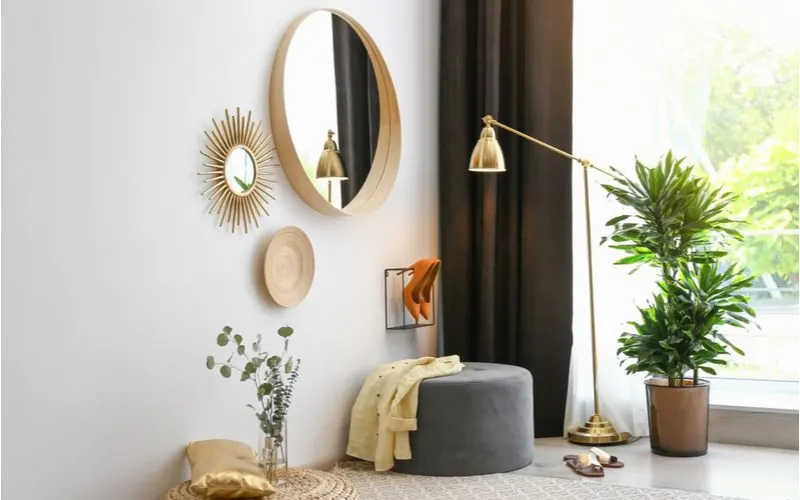
New Africa/Shutterstock
Mirrors instantly make a room look bigger and brighter. Sunburst mirrors and mirrors with simple frames will also enhance your décor in this style.
This photo shows an example of each: a large circular mirror with a simple frame and a sunburst frame.
Candles

New Africa/Shutterstock
Candles are another timeless accessory. A traditional table setting will feature long tapered candlesticks in candleholders.
Since transitional combines both styles, you can choose whatever you like and think will balance the room’s overall look.
Carpets
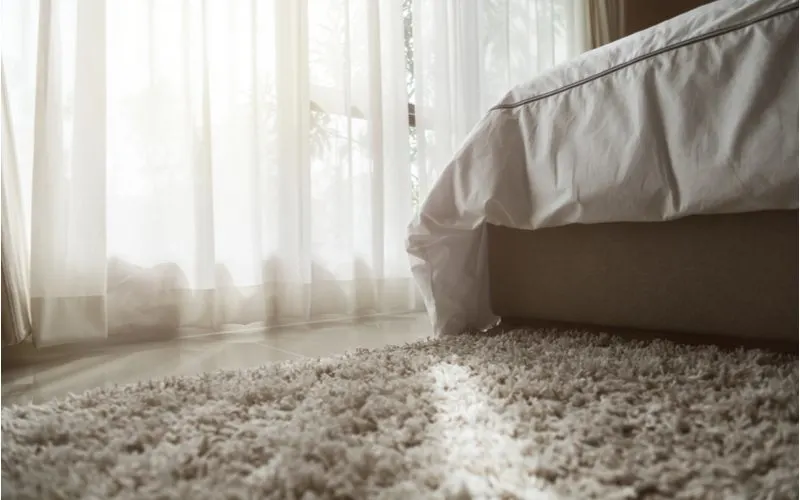
Whyframe/Shutterstock
This hand-tufted wool area rug is an excellent addition to enhance a transitional room. Depending on your home, you may not be able to redo the floors or carpets because that can be very costly.
Area rugs are a great solution, however. Stick with neutrals and simple geometric shapes, avoiding complex patterns and bright colors.
Stylish Flair

Jaclyn Vernace/Shutterstock
A formal sitting area is reminiscent of past times, but you can give it a modern feel. A sitting area is an area for connection and conversation, which is a rare art in the days of technology.
Consider creating a sophisticated seating area that is not overly formal—a spot where you can have a cup of tea or coffee and visit with someone.
Comfort

Tatyana Soares/Shutterstock
Just relax! Your home won’t look like a magazine cover all the time; it’s meant to be lived in. The transitional style is perfect for active families.
Less clutter and fragile décor mean more fun with less chance of breaking anything—and it also makes it easier to clean and keep up.
Transitional Bathroom
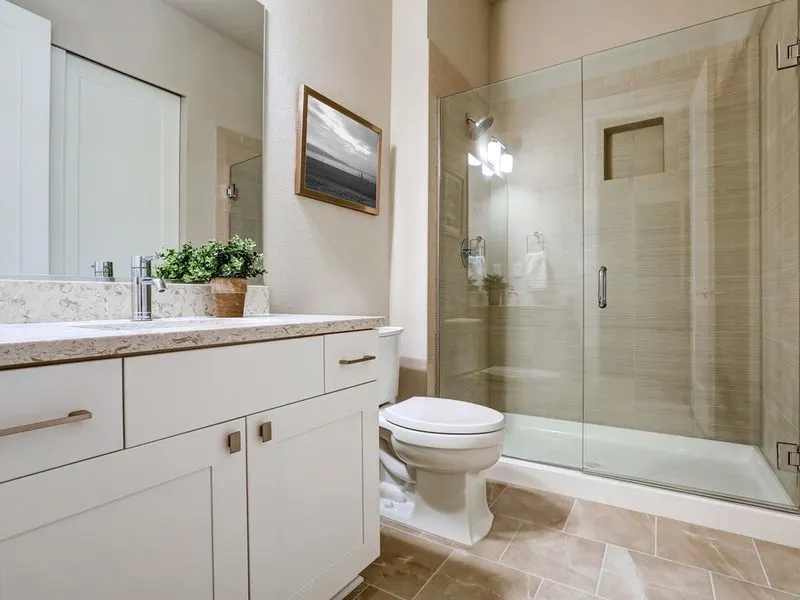
Artazum/Shutterstock
Check out this light bathroom with minimal accessories. The room combines a stone countertop, a more recent trend in home décor, with a traditional painting. This blend is typical of the transitional style.
Transitional Dining Room
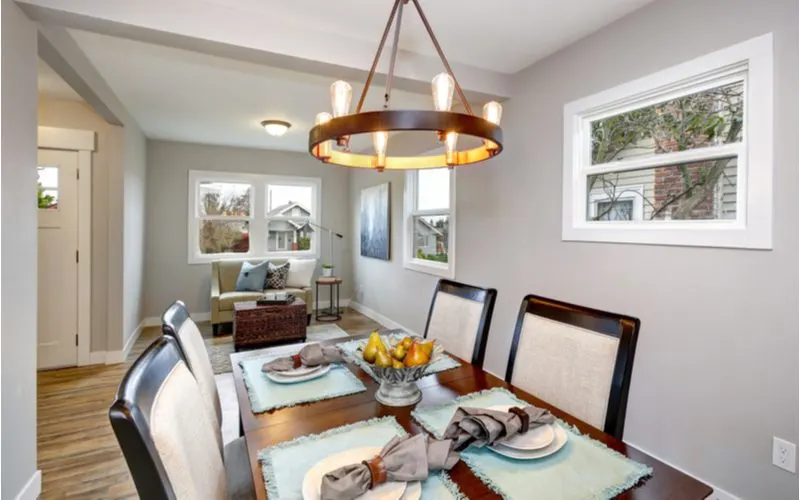
Artazum/Shutterstock
This transitional dining space features a moderate-sized table and dining chairs. The light fixture is unique but not overbearing in this space.
You can also see a note of traditional décor in the use of a bowl of fruit as the table centerpiece.
Transitional Kitchen
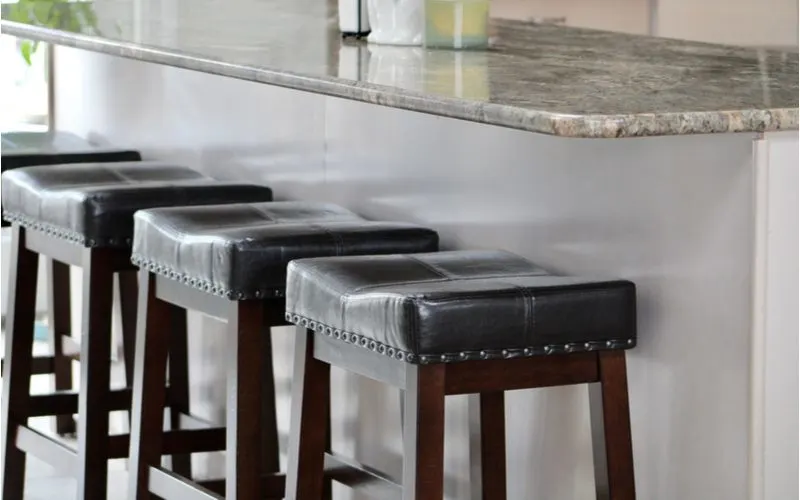
Jaclyn Vernace/Shutterstock
Right now, it’s popular to have granite or quartz countertops and an open kitchen room design, which often features a pull-up bar, as you see here.
Work with the design of your floor plan and modern conveniences, then add elements of the transitional style, such as these low-profile barstools made of leather.
Transitional Bedroom
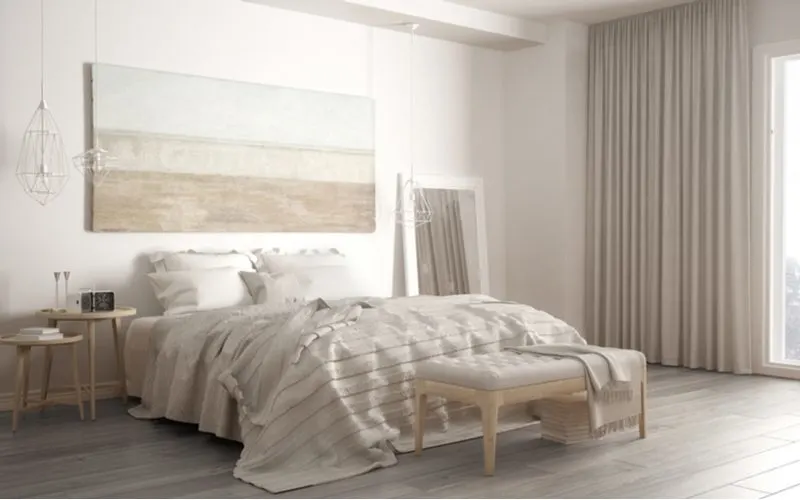
Archi_Viz/Shutterstock
A muted bedroom naturally creates a relaxing atmosphere, so you can nod off in comfort at night. Keep the room simple and free of clutter by choosing just a few décor pieces.
Using paintings for your wall décor gives the room a more classic look versus trendier items like canvas word art. You can also warm up the room with area rugs, a padded headboard, and a cozy armchair.
Transitional Baby Nursery

Ocwarfford/Shutterstock
A baby nursery or children’s room is a great spot to be creative. If you’re bringing transitional style into your children’s rooms, you can maintain an element of fun but perhaps not use the bright primary colors or cartoon designs you often see in kids’ rooms.
This beautiful nursery is soothing for baby and mom, with a grey, white, and brown palette. The pillow, blanket, and rug all add texture to the space. In addition, the giraffe frames and figures add the fun factor needed for a children’s area.
Transitional Family Room
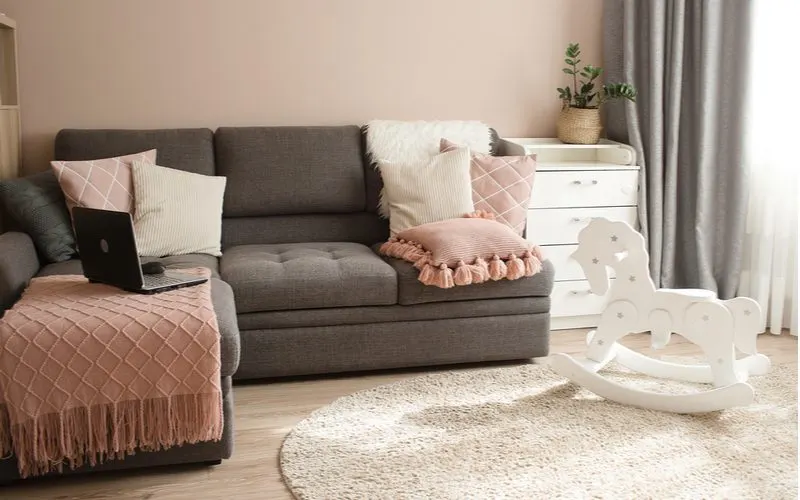
PhotoJuli86/Shutterstock
Ready to kick back and relax? Although you may choose formal décor for some areas of your home, you want to set aside casual spaces where kids and adults alike can curl up and take it easy.
This family room area could be an ideal spot to work, play, or simply relax.
The pink pillows and blanket add color, while the grey and white keep the room clean and muted overall. The fuzzy rug, textured blankets, and pillows all tie back to transitional style.
Transitional Living Area

Creo2/Shutterstock
Feel free to take risks. When you’re blending styles, you can’t go “wrong” per se with any choices. You have monochromatic colors on the sofa and drapes in this light and lovely space.
But the white bookshelf has bright and bold colors in the mix. They’re by no means overwhelming in the room, but just enough to keep things interesting.
Things to Consider
Hopefully, you’re inspired to decorate with confidence after seeing these beautiful examples of transitional style home décor.
You can hire a professional interior decorator or designer to help you, or you can pay for an online service to mock up designs and help you choose pieces.
Or, dive in and DIY. You can’t go wrong as you experiment and have fun with the process. Here are some considerations as you prepare to dive into decorating, redecorating, or adding to your current home.
- Overall, this style has a clean, sophisticated, yet comfortable look.
- Transitional style steers away from overly ornate and formal features that can be common in traditional décor.
- Remember, you can utilize color here and there, but overall, maintain a muted, neutral tone palette. This advice applies to your furniture, rugs, artwork, and textiles.
- Avoid sharp and stark corners and art that you would find in an ultra-modern style. Lines should be soft and curved.
- Include a healthy balance of traditional and modern or contemporary styles. Having décor features from both ends of the spectrum is what defines a room as being transitional style. The defining style is in the mixing.
- Another common way of describing the nature of the transitional style is that it blends masculine and feminine, combining both strong and soft elements.
- Have fun and incorporate décor items and furnishings you love. The great thing about a combo style like this is that you don’t have to follow strict rules; you can throw in whatever appeals to you.
Which Transitional Style Will You Choose for Your Home?
With a transitional style, you can hold onto the heart and soul of traditional décor but sprinkle in contemporary accents to stay current with trends you admire.
Transitional decorating combines comfort, sophistication, and class to make a beautifully decorated house feel like a welcoming home.

